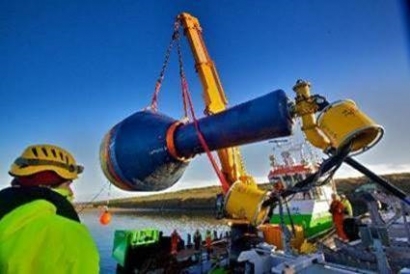
The new storm protection mode makes the device largely transparent to incoming waves. In testing, it was proven effective in minimizing motion and loads, providing robust operation in storm conditions. This new function for WECs can be compared to wind turbines that pitch the blades to minimize storm loading, a function found in essentially all commercial wind turbines of today.
The WaveSpring phase control technology delivered the projected amplification of motion and power capture performance in operational sea states, enabling a threefold increase in average power capture for a given buoy size.
As part of the project, the European Marine Energy Centre (EMEC) issued a “Performance Statement” verifying measured performance.
Elaine Buck, Technical Director, at EMEC said, “We’re delighted with the success of the project, funded by Wave Energy Scotland. EMEC has overseen the dry and wet testing of the machine, ensuring strict quality management and quality assurance of the verification process and providing Performance Statements for both stages. We are looking forward to further supporting CorPower as they develop their next iteration WEC using the learning from the C3 tests.”
The project that was financed by Wave Energy Scotland, InnoEnergy, Swedish Energy Agency and Interreg Foresea has demonstrated technical capabilities to produce electricity at a competitive cost as volumes increase. This breakthrough in wave energy is based on 30 years of research in hydrodynamics and phase control technology, now proven in its natural environment.

